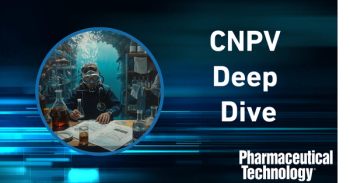
- Pharmaceutical Technology-04-02-2011
- Volume 35
- Issue 4
Inspections Gone Mad
In any industry, inspections can be a pain, and pharma is no exception.
Ka-ching
"Ouch," our GMP Agent-In-Place said. "We had a deal to purchase another pharma company in another country (let's call it Country A), and we borrowed a bunch of money from a bank in our native country (let's call it Country B) to complete the deal. As the deal came to closure, we moved the money from Country B to Country A, but the government examining the deal nixed it because of monopoly-compliance issues. We moved the money back to Country A to pay off the loan. Not all was lost—we made $1 million thanks to the exchange rates."
Uncharted
"To ease the outgoing acceptable quality level process, we purchased handheld slide-rule acceptable quality level charts for the inspectors to use," our GMP Agent-In-Place explained. "Because the format was different from our previously used printed tables, we changed our standard operating procedure (SOP) to explain how to use the slide table. Unfortunately, the person writing the SOP did not clearly understand the new device, and he wrote the SOP incorrectly.
"Fast-forward 3 months, and this problem was noticed during an audit. We had to contract a statistician to calculate our 'operating characteristic' curves and graphs to show what the effect of the incorrect process actually used would be, and it turned out, luckily, to be a trivial effect."
Tell us again
"During an FDA inspection, agency representatives reviewed various deviation investigations," grumped our GMP Agent-In-Place. "One particular inspector wrote a 483-observation noted a single deviation even though we had demonstrated that the deviation was known, investigated, and underwent effective corrective actions. In the observation, the agent merely noted the deviation's existence, and wrote nothing about the investigation.
"Our response included a summary of what we had done, including the full investigation, the root cause, the corrective action, and the effectiveness checks. This response was accepted and the inspection filed was closed," explained our Agent-in-Place. "We are not sure why we had to restate our already completed actions in the response. The work created a lot of work and anxiety for everyone involved, and resulted in no improvement in quality, potency, purity, identity, or safety of the drug product. In addition, the effort took time that could have been allocated to improving compliance in other areas."
I know you know how
"Like many mid-sized pharmaceutical manufacturing firms, we have several factories around the world, and they often supply a single market," said our GMP Agent-in-Place. "In one instance, we supplied a European Union market, and an inspector from that EU country performed inspections at several of our international manufacturing sites. He was able to compare and contrast the sites, and noted that we did not have the same standards for some operations (e.g., the way we connected the sterile bulk vessel to the filling line).
"He especially didn't like the connection location at one site; the room was classified as class D but the connection was performed under a local class-A air shower. The connection timeframe was thoroughly monitored environmentally, including for airborne particulate, active airborne germ monitoring, operator-glove plates, and microbial settle plates. But," continued our Agent, "he noted that the local class-A air shower did not negate the room classification, nor did the class-D room meet requirements. Old buildings are such a pain."
Pharmaceutical Technology's monthly "Agent-in-Place" column distills true-life cautionary tales from the files of Control, a senior compliance officer. If you have a story to share, please email it to Control at
Articles in this issue
over 14 years ago
Pharmaceutical Technology North America, April 2011over 14 years ago
In the Spotlight April 2011over 14 years ago
Health-Reform Controversiesover 14 years ago
Biotechnology Loses Lead in Fundingover 14 years ago
Celebrity Couples to Disuniteover 14 years ago
Report From Chinaover 14 years ago
Scrutinizing the Subvisibleover 14 years ago
When Patience Pays OffNewsletter
Get the essential updates shaping the future of pharma manufacturing and compliance—subscribe today to Pharmaceutical Technology and never miss a breakthrough.




